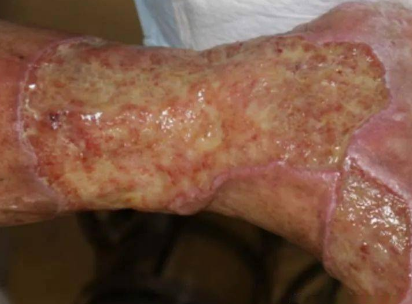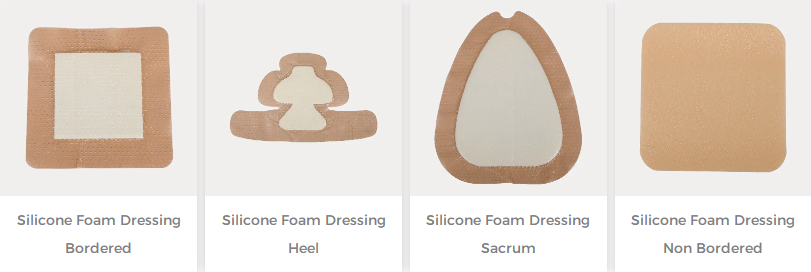Long-term exposure of the skin to various body fluids (such as urine, feces, sweat, wound exudate, mucus or saliva, etc.) can lead to skin inflammation or ulceration and secondary infection. The skin's moisture barrier plays a crucial role in maintaining homeostasis, primarily by slowing the flow of water out of the body and regulating the uptake of water and solutes from the body. When exposed to too much moisture, the skin softens, swells, and wrinkles, all of which can make the skin more vulnerable to one of the complex factors mentioned above. This article will share with you how to prevent wet-related dermatitis around the wound. Let's take a look with me.
Factors related to the skin moisture barrier around the wound:
Wound infection can also greatly increase the risk of peri-wound maceration, such as diabetic foot ulcers, venous leg ulcers, pressure ulcers, etc. Because it increases the production of exudate. The moisture barrier is an essential part of skin function. Its main function is to maintain homeostasis by reducing internal water loss and preventing excessive absorption of water and solutions from the environment.
Influencing factors:
1. Skin pH value: The normal pH value of the skin surface is 5.5-5.9, which is weakly acidic. If the pH value is higher than this range, it will damage the newly produced lipids, reduce the viscosity of keratinocytes, and accelerate the dissolution of existing keratinocytes
2. Old age: the proportion of water in the stratum corneum of the elderly skin is half that of young people.
3. Obesity: Fat people's skin is exposed to sweat for an increased time and the skin is more alkaline
4. Specific reactions: Skin sensitivity increases after external stimuli, including sweating, high humidity, or long showers that expose the skin to moist and warm water for a long time 5. Seasons in the environment: especially in humid seasons, which affect the skin moisture barrier's response to the external environment
How to prevent and reduce the risk of peri-wound moisture-related dermatitis?
1. Regularly check the wound to detect skin changes in time
2. Choose a dressing with suitable absorbency to manage wound exudate (e.g. silicone foam dressing)
3. Apply a barrier film or skin protection product to the skin around the wound at an appropriate time
Treatment and Intervention:
The first step in treating peri-wound moisture-related dermatitis is managing excess exudate, which means using an absorbent dressing, silicone foam dressing, which absorbs large amounts of wound exudate, maintains a moist environment, and accelerates wound healing. The surface layer of the dressing has a porous structure, low surface tension, no adhesion to the wound surface, good air permeability, elasticity, softness, strong plasticity, and lightweight, and stable physical and chemical properties. Gas exchange is beneficial to wound healing, and silicone has mild viscosity, safety, and non-irritation. It will not cause pain to patients when changing dressings and can provide a certain degree of protection for the skin around the wound. The operation is also very simple and convenient. After the exudate is effectively managed, the skin can be healed.
For more information on Innomed® silicone foam dressings, refer to the previous articles. If you have customized needs, you are welcome to contact us; we will serve you wholeheartedly. At Longterm Medical, we transform this data by innovating and developing products that make life easier for those who need loving care.
Editor: kiki Jia
Date: January 29, 2023

 English
English عربى
عربى Español
Español русский
русский 中文简体
中文简体








